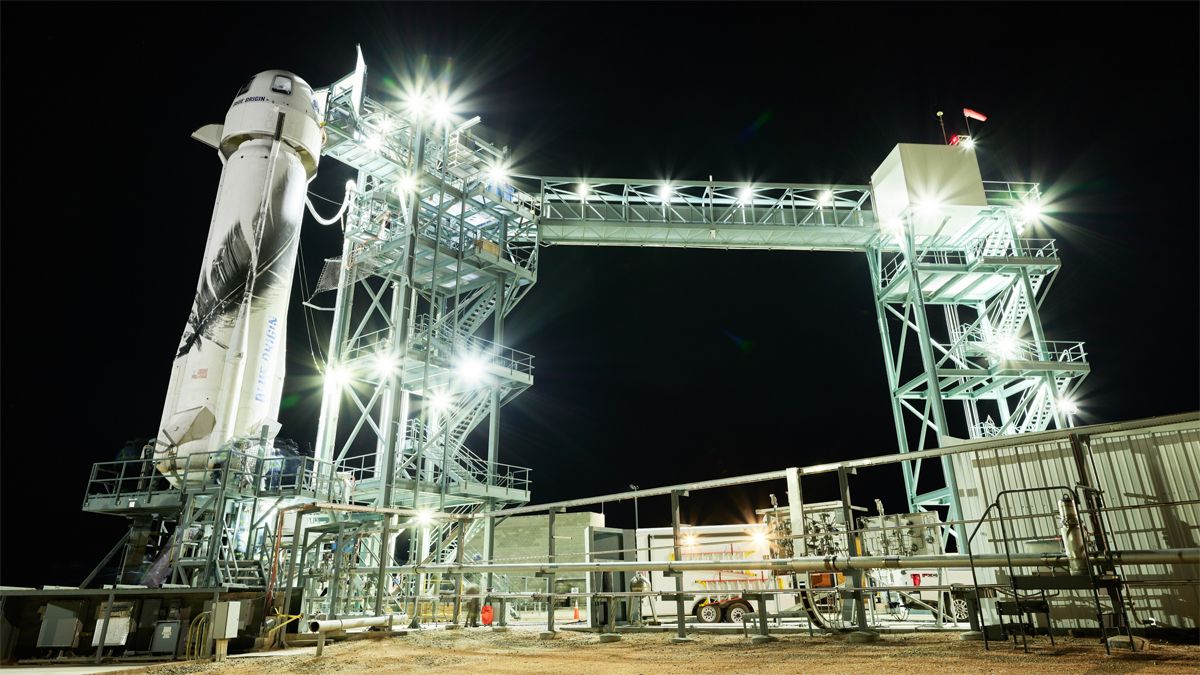Blue Origin plans to launch its next space mission and you can watch the uncrewed action live. Blue Origin’s New Shepard suborbital vehicle will lift off Monday (Sept. 12) from the company’s West Texas launch site, which is near the town of Van Horn. You can watch it live on Space.com, courtesy of Blue Origin, or directly via the company. The webcast will begin about 20 minutes before launch, the company has said, and launch is scheduled for 9:30 a.m. EDT (1330 GMT). Blue Origin originally hoped to launch the…
Read MoreMonth: September 2022
Sony A7R IV mirrorless camera review
The Sony A7R IV was released back in 2019, only two years after the A7R III. On the surface, it looks pretty similar to the A7R III, but Sony has made subtle changes to its design and performance which make the world of difference in practice, making it an absolute dream to handle. This camera has a world-leading auto focus system, incredible image quality and better weather sealing than previous models. Sony A7R IV: Key Specs Sensor: Full-frameMount: Sony EResolution: 61.0 MegapixelISO Sensitivity: 100-32,000 (expanded 50-102,400)Continuous Shooting: up to 10FPS…
Read MoreDNA of DeForest Kelley, Dr. ‘Bones’ McCoy from ‘Star Trek,’ will fly to space with original cast on memorial spaceflight
Last month we delivered news of an upcoming memorial space flight from the space burial firm Celestis that was going to be carrying the cremated remains and DNA of “Star Trek’s” Nichelle Nichols, who died on July 30 at the ripe age of 89. Now there’s been word of another beloved “Star Trek” alumni hitching a ride aboard Celestis’ remembrance Enterprise Flight along with other well-known deceased “Trek” luminaries as the reunion will now include the late DeForest Kelley’s DNA. The Texas-based company provides respectful “memorial spaceflight services” for persons…
Read More‘Doomsday Glacier’ is teetering even closer to disaster than scientists thought, new seafloor map shows
The researcher onboard the R/V Nathaniel B. Palmer as it sits in front of Thwaites Glacier in Antarctica. (Image credit: lexandra Mazur/University of Gothenburg) Underwater robots that peered under Antarctica’s Thwaites Glacier, nicknamed the “Doomsday Glacier,” saw that its doom may come sooner than expected with an extreme spike in ice loss. A detailed map of the seafloor surrounding the icy behemoth has revealed that the glacier underwent periods of rapid retreat within the last few centuries, which could be triggered again through melt driven by climate change. Thwaites Glacier…
Read MoreOn This Day In Space: Sept. 11, 1985: International Cometary Explorer completes 1st comet flyby
On Sept. 11, 1985, the International Cometary Explorer, or “ICE” became the first spacecraft to fly by a comet. NASA’s Vintage ISEE-3 ICE Spacecraft in Pictures Originally launched as the International Sun-Earth Explorer-3 in 1978, ICE was one of three spacecraft built for the International Sun-Earth Explorer (ISEE) program, a joint effort by NASA, the European Space Research Organization and the European Space Agency. An artist’s depiction of NASA’s International Sun-Earth Explorer 3 spacecraft as it flies through space. The volunteer ISEE-3 Reboot Project, which hoped to move the probe…
Read MoreOn This Day In Space: Sept. 10, 2011: NASA’s GRAIL mission launches to the moon
On Sept. 10, 2011, NASA’s GRAIL spacecraft launched on a mission to the moon! GRAIL, which stands for Gravity Recovery and Interior Laboratory, was sent to the moon to map its gravitational fields. Scientists could study the moon‘s interior structure by looking at maps of the moon’s gravity. Holy GRAIL! Photos From NASA’s Moon Gravity Mission Asteroid impacts from billions of years ago left dense pockets of material under the lunar surface, which can exert extra gravitational pull on spacecraft orbiting the moon. So by measuring that gravitational pull, the…
Read MoreThis Week In Space podcast: Episode 28 — Breathing on Mars
On today’s This Week in Space, we talk about making oxygen on Mars. On this episode of This Week in Space (opens in new tab), Rod Pyle and Tariq Malik talk with Mike Hecht, who is the main man behind the MOXIE oxygen-making experiment on the Perseverance rover. Mars won’t be much fun to explore if we can’t find a way to breathe there, and we’ll need fuel to come home. MOXIE was designed to make oxygen from Martian air… and it works! Also in this episode, NASA and astronauts remember…
Read MoreFiery ancient asteroid impacts turned living things into charcoal
The last, dramatic moments of some microbes’ lives may tell us more about how serious space rock impacts on Earth were in the ancient past. The charred bodies of microorganisms killed by even a moderate asteroid impact can show the amount of damage produced by a cosmic crash, a new study suggests. A research team examined four craters in Estonia, Poland and Canada that were created thousands of years apart. Despite their geographical distance and the amount of time between these various impacts, the team found millimeter-to-centimeter sized pieces of…
Read MoreNASA Hosts National Space Council Meeting, Vice President Chairs Event
Vice President Kamala Harris highlighted the importance of climate, human spaceflight, and STEM education during the Biden-Harris Administration’s second National Space Council meeting Friday, held at NASA’s Johnson Space Center in Houston.
Read MoreNASA Awards $4 Million Through New Space Grant KIDS Opportunity
NASA is awarding more than $4 million to institutions across the U.S. to help bring the excitement of authentic NASA experiences to groups of middle and high school students who are traditionally underserved and underrepresented in STEM.
Read More